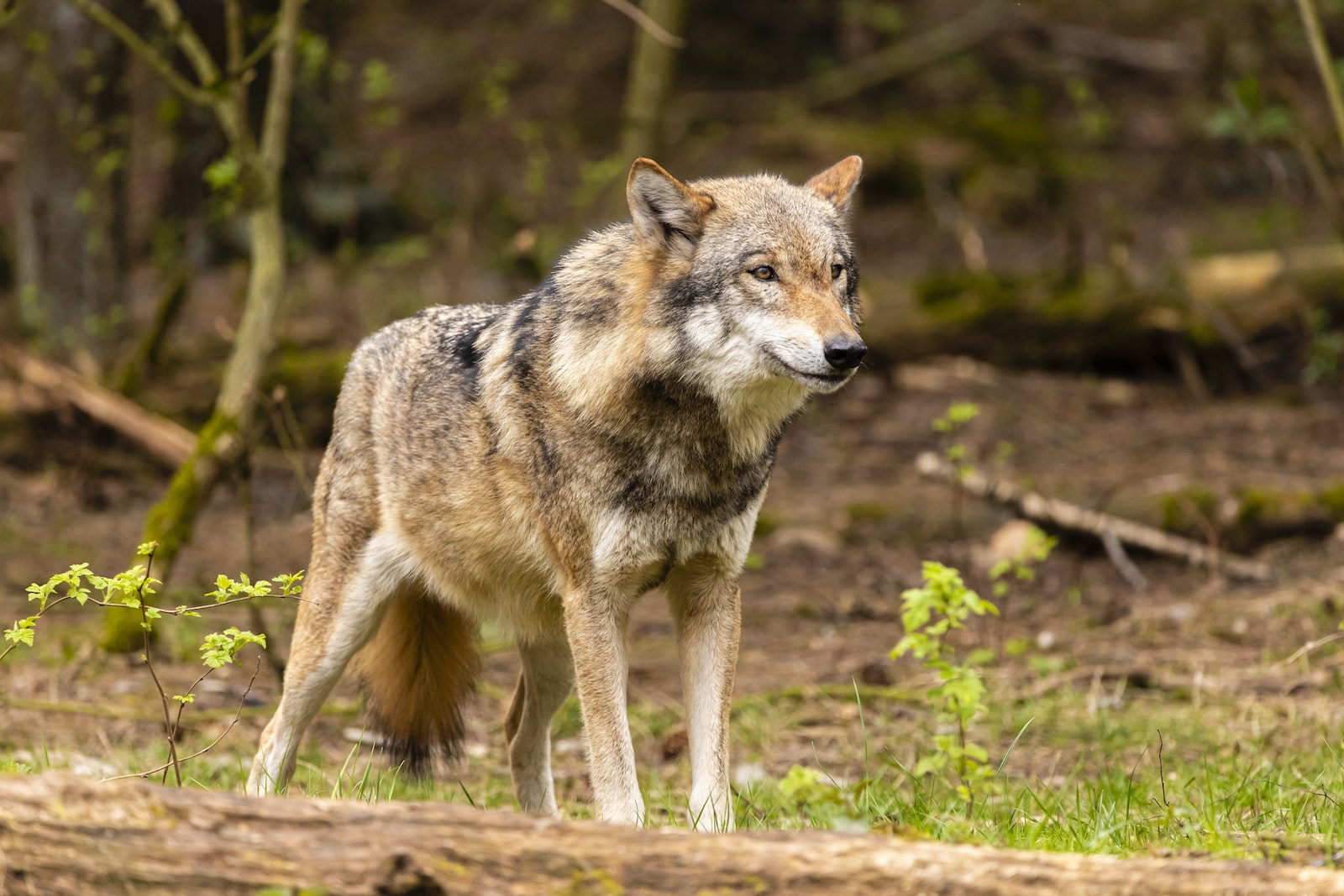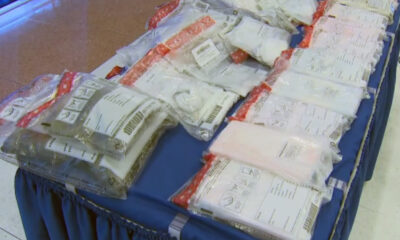Local News
Residents demand relocation of coyotes after numerous attacks

After two beloved family pets were killed by coyotes in the downtown Toronto core, those living in Liberty Village and the Fort York area are pleading with authorities to prioritize the safety of residents and their animals.
On Friday, Jan. 24, a four year old chihuahua was grabbed by a coyote and carried off in the Dan Leckie Way and Housey Street area.
“The coyote just jumped out of the bush and grabbed Chico by his jacket and his neck and started running,” says his grieving owner, who preferred to be identified only as Nadia.
“I was holding onto the leash pretty tight as I always do, and [the coyote] pulled me and I fell forward. I picked up Pedro, my second dog, and I started running, chasing him up towards Dan Leckie. There was a lot of cars and people outside. Some people were yelling, trying to stop him. Cars that were going up Dan Leckie were honking, trying to stop him, maybe scare him off. But he just didn’t let go. He just kept going.”
As she continued her search later that night, Nadia found Chico’s jacket under the Bathurst Street bridge.
“I kept hoping that maybe Chico found a way to just escape. He’s fast, so maybe he would’ve just escaped. And I went in and out of hope and reality and I just didn’t believe it and I just didn’t know what to do,” she said.
The following Sunday, while searching at the Fort York Historical Site, a worker told her they had found Chico’s body partially buried underneath a staircase in one of their buildings on the property.
“On Monday we were able to take him in to our vet and say our last goodbyes and get him cremated,” said Nadia.
Nadia’s four-year-old-dog Chico was attacked and carried off my a coyote in the downtown core on Jan. 24, 2025. Credit: Nadia
In November last year, Liberty Village Resident Ruby Kooner had a similar experience steps away from her home, in a greenspace near Ordnance Street.
“We were surprise attacked by two coyotes, and it was quite traumatizing. It was shocking … and as I was fending off the coyote in the front, the one in the back attacked my dog. They were trying to take her away,” explains Kooner.
“I think instinct kicked in and I went kind of bats**t crazy on the coyotes. I leaned in and picked up my dog and started kicking and screaming at the coyotes. So they backed off for a minute. She had a puncture wound, so she was bleeding and we were both shaking. And then at that point they started to come forward, even when I had her in my arms.”
It was only with the help of passers by who joined Kooner in yelling and hazing the coyotes that she was able to get away. Thereafter her dog Amber was hospitalized and spent three weeks on antibiotics.
“Two days after the antibiotics finished, she went into sepsis. So it does seem like the coyotes have a bacteria that we are not vaccinating for possibly. She was in the ICU for a week and then she passed away,” said Kooner.
“Amber was my best friend. I had her for 13 years. She was my baby. I’m completely heartbroken and traumatized.”

Ruby Kooner’s 13-year-old dog Amber succumbed to her injuries following weeks of treatment in December 2024. Credit: Ruby Kooner
Traditional tactics aren’t working
Kooner and at least 30 other neighbourhood residents gathered in Liberty Village on Friday to demand the city take more concrete steps to protect them and their pets.
They said the advice given and measures taken by Toronto Animal Services simply aren’t working anymore.
“The tips and tricks and the education provided by the city and animal services is outdated. The coyotes, these coyotes in particular, are not behaving in that manner. They’re aggressive. They’re in survival mode because they’ve lost their homes and their habitats and their food source,” said Kooner.
The education provided to residents includes “walk dogs in areas of high pedestrian traffic such as busy streets, jogging and park trails, walk during daylight hours, avoid walking along densely forested areas.” City staff have also repeatedly identified off leash dogs as a contributing factor to the issue.
All residents who spoke at the meeting about their coyote encounters said their dogs were leashed during the attacks. Many shared experiences of being attacked at all times of day, in densely populated areas with little to no bush or forest cover.
“When this happened to me it was peak rush hour, people are getting back from work, it was still light out,” said Chris Chu.
“We don’t usually walk in the parks, we walk around the neighbouring areas where the stores are. My dog had stopped for a quick pee … and a coyote jumped up from behind me, tackled by dog and tried to pick it up. I shouted, pulled the leash back, and had it not been for another person walking up the street who was shouting as well, I don’t know what would have happened.”
“I’ve actually been chased or attacked three times by coyotes since last September,” said Joanna, who has two small chihuahuas.
“The first time I actually had my son with me. It was during the day in Garrison Park … he chased me through the entire park. The second time my dog Willow was actually attacked … [the coyote] bit her back leg and he had her in his mouth … I had to try and kick him and pull her away. He dropped her and then I ran … he chased me right to the condo door. And the third time my husband took the dogs out and a coyote was trying to sneak up on him.”
In that last instance, Joanna’s husband began ringing a large bell at the coyote, which they now regularly carry with them, and finally got the coyote to back off after considerable effort.
He was following another piece of advice from Animals Services that says when confronted by a coyote, “make noise and be big and assertive.”
“Coyotes are naturally timid and flee when confronted assertively,” said Jasmine Herzog, Manager of Enforcement and Mobile Response Unit in a statement.
But other residents say that doesn’t seem to work consistently.
“That has not been my experience. If anything, the coyotes in this area, maybe because they’re stressed or displaced, have that extra aggression. They don’t seem scared with yelling,” said another Liberty Village resident, Ilyse Hoffer.
“My dog is over 90 pounds and a German Shepherd mix. [A coyote] ran across this field [behind Ordnance street] towards us – it was around 6:30 p.m. I was yelling and trying to get it to go away, my dog was barking. But it wasn’t scared, it just stood there and stared at us.”
Residents demand relocation of coyotes
“I’d like to reiterate that we are following all the rules. Our dogs are on leashes, we’re diligent, we’re hazing the coyotes. None of this is working,” said Kooner at the meeting.
“What we’re asking for is relocation. Find a humane solution and until we can have some action, we would like continuous patrol. Periodic patrol is not enough. We need continuous patrol, day and night for all of the areas affected – so going all the way down to Fort York, all the way down to Wellington and Stanley Park.”
“This is a huge country. [The coyotes] don’t have to live in downtown Toronto. There are lots of wonderful places where they can thrive and they don’t have to be in our community, threatening the people, the pets, the children,” reiterated neighbourhood resident Genia Elkind.
Spadina-Fort York MPP Chris Glover who attended the meeting said a Ministry of Natural Resources policy prevents the relocation of coyotes beyond one kilometre because of the risk of spreading pathogens. However he’s looking into whether an exception can be made in this case.
“In a kilometre here – that’s like putting the coyote on a streetcar up to Queen Street – that’s not going to do anything. We need to find some solution,” said Glover.
“I phoned a number of sanctuaries to see if there is a place that would take coyotes. Most sanctuaries just take wildlife that’s been injured and they rehabilitate them and release them back. I haven’t found a wildlife sanctuary yet that would actually take them and provide them a place to stay for the rest of their lives. If we can find a sanctuary, then maybe there’s a way to get them into a sanctuary that would go beyond the kilometre,” he said.
On Thursday night, a Liberty Village resident and her 80 pound dog were attacked by a coyote and she was injured in the fray. Another area resident who was also charged by a coyote while walking his four-month old Labrador puppy that same morning says with humans being injured, it’s time to take more decisive action.
“I think I’ve got a little bit of a different perspective – I’m from B.C., spent a lot of time as an outdoorsman. I think we’re trying to create solutions for something that’s [commonly] dealt with across this country in rural-suburban interfaces,” said Nick.
“Coyotes as a species are doing fine … I don’t understand why lethal control is not being considered. I’ve got an issue with just how much they’ve dragged their feet on this. Any other province will take care of a black bear or coyote with lethal measures – it’s taxpayers or an animal in this situation and it’s been a bit ridiculous how the city’s dealt with it.”
Both Glover and Spadina-Fort York Councillor Ausma Malik said the issue has escalated to this point because of uninformed decisions made by the province with regards to the redevelopment of Ontario Place.
“[It] has displaced coyotes from their habitat without the proper care and consideration and the consequence is that they’re entering our neighbourhoods,” Malik told The Leader Spirit.
“I have requested that animal services and the relevant city divisions look very closely at what our options are for relocating coyotes … the city is bringing forward an approach to coyotes in the last quarter of this year and that’s too far away – we have to be able to act now.”
To that end, Malik says she’s urgently proposing a “downtown coyote action plan” at the next meeting of the Economic and Community Development Committee scheduled for Feb. 26.
She explained that the plan will look into a number of different solutions.
“[It will look at] what we can deploy — whether it’s technology, whether it’s measures around Animal Services — it’s looking at what other jurisdictions have also done in situations like this to make sure we’re planning for the long term as we see this issue escalate,” she said.
In the immediate future, she says staff patrols will be increased and city staff are working with experts at Coyote Canada to address the issue in a humane way.
Malik also acknowledges that residents have been doing all they can to keep themselves and their pets safe.
“We have to deploy specific strategies that will actually make a difference … and it is unacceptable that the responsibility is just on pet owners alone. I know how much care and commitment there is to make sure that their animals are safe, that we share our greenspaces and when they’re advised on the rules on the proper precautions, they have taken them and we are seeing that we need to do more,” she said.
“I’m looking at every lever we have at the city and also what we might need to do in collaboration with other levels of government or other authorities. That is the dedicated work we have in front of us.”
Meanwhile, as residents wait for a solution, they say the feeling of fear and uncertainty continues to grow.
“I’m scared to walk my dog in this neighbourhood,” said Hoffer.
Many added that they feel “hunted” by the coyotes who are growing increasingly bold and vicious during mating season.
“We are entitled to enjoy our greenspaces and feel safe,” said Elkind.
“The coyotes unfortunately have no natural predators here. They are breeding and thriving. We are not.”












